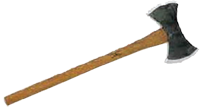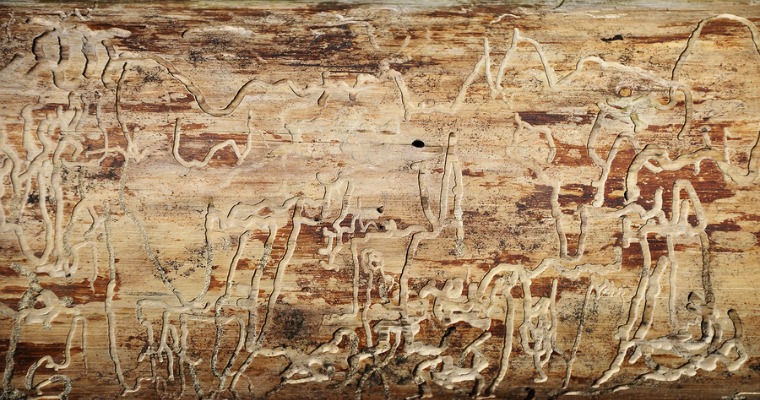Have you noticed one or more pine trees in your yard losing its bark? If so, the problem could be attributed to a bark beetle infestation.
There are roughly 6,000 different species of bark beetles (subfamily Scolytinae). They live up their namesake by burrowing deep inside the inner bark of both living and dead trees where they eat and reproduce.
Bark beetles play an important role in healthy ecosystems, destroying dead trees so there’s room for new trees to grow. But bark beetles may also attack living trees, injuring or even killing otherwise healthy trees.
Signs of Bark Beetle Infestation
So, how do you know if bark beetles have infested your tree? One sign of infestation is the presence of pitch tubes. When a bark beetle attacks a tree, the tree responds by releasing pitch.
If the tree repelled the beetle, the pitch tube will likely be white. It the tree failed to repel the bark beetle, however, the pitch tube will be red-brown.
Another sign of a bark beetle infestation is the presence of frass around the base of the tree. When bark beetles burrow through a tree, they create a soft sawdust-like material that’s reddish-brown. You can usually find this frass around the base of the tree.
Of course, there are other ways to diagnose a bark beetle infestation, including looking at the leaves and/or needles.
For pine trees and other conifers, the presence of brown needles may indicate an infestation. The transition from a healthy green to a duller more yellowish color may also indicate a bark beetle infestation.
Treating a Bark Beetle-Infested Tree
Unfortunately, treating a bark beetle-infested tree isn’t always easy, nor is there any guarantee of a positive outcome. If the bark beetles have burrowed their way deep inside the tree, you may have to cut it down.
Applying chemical pesticides to the tree will only kill the bark beetles on the outside of the tree, not the ones that have burrowed inside.
If you suspect bark beetles have infested one or more of your trees, contact a professional tree removal company as soon as possible to remove the tree. If left untreated, bark beetles will devour the current tree, at which point they’ll move on to other trees nearby. This leads to a viscous and destructive cycle that can kill an entire yard of trees.
Preventing a Bark Beetle Infestation
Prevention is the best course of action when dealing with bark beetles. If bark beetles are a problem in your area, consider a chemical preventative application such as lindane. Lindane will protect pine trees for up to a year, at which point the chemical can simply be reapplied for another 12 months of protection.
The Woodsman Company offers tree planting, tree pruning and shrub trimming, tree removal and stump grinding as well as a tree wellness program.
If we can help with any of your tree care needs give us a call at 512-846-2535 or 512-940-0799 or


Great article – I particularly liked how you cut to chase and showed your viewers how to spot beetle infestations by the color of the pitch tube. I’ll have to check my trees in back to see if there are any beetles making their home back there.
This is some great information, and I appreciate your suggestion to have a tree infested by bark beetles removed right away. I have several pine trees in my backyard, and I’ve noticed that there’s frass around the base of one of them. I’ll definitely look into having that one removed so the bark beetles don’t spread to the rest of them. Thank for the great post!